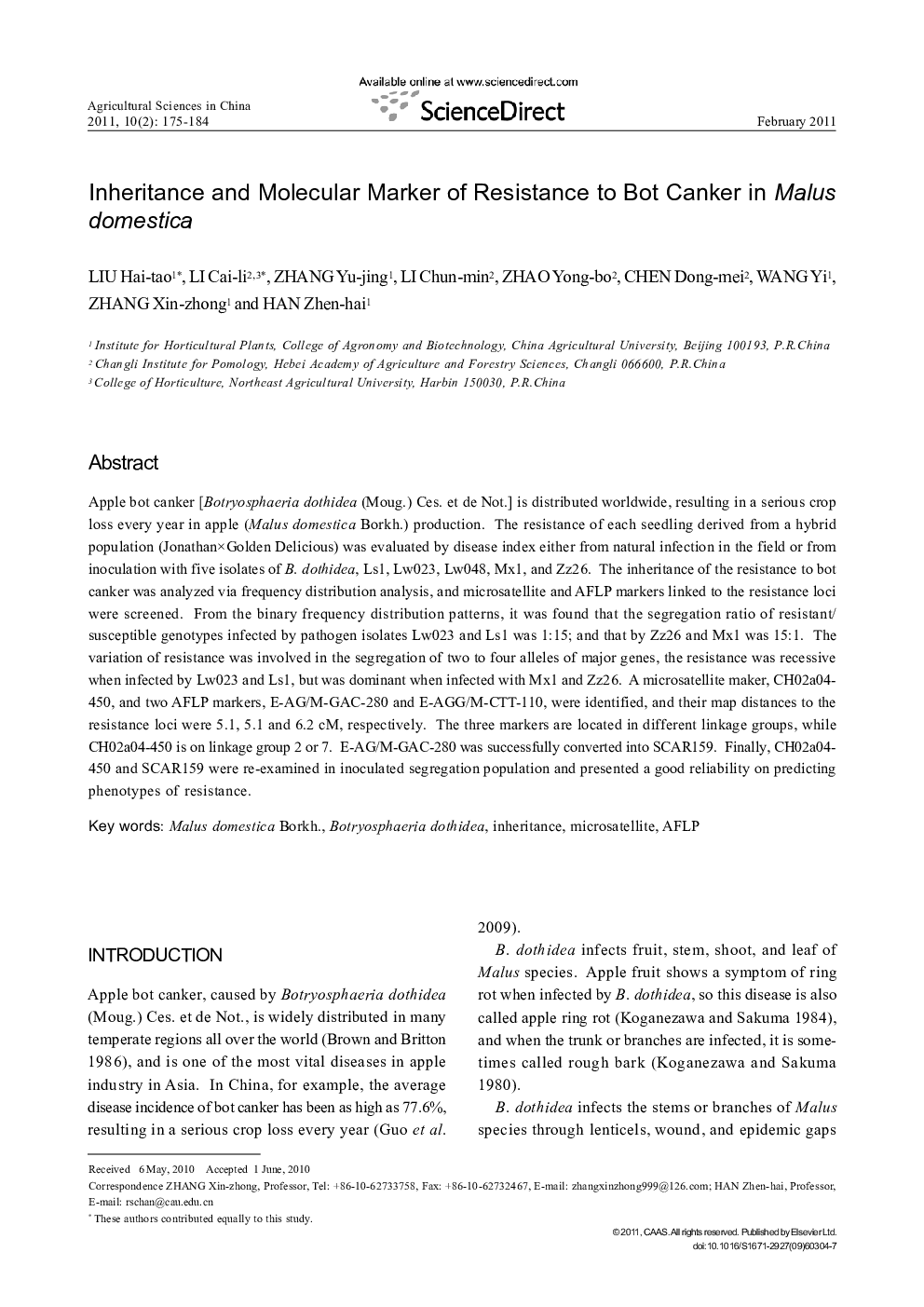| Article ID | Journal | Published Year | Pages | File Type |
|---|---|---|---|---|
| 4489898 | Agricultural Sciences in China | 2011 | 10 Pages |
Apple bot canker [Botryosphaeria dothidea (Moug.) Ces. et de Not.] is distributed worldwide, resulting in a serious crop loss every year in apple (Malus domestica Borkh.) production. The resistance of each seedling derived from a hybrid population (JonathanxGolden Delicious) was evaluated by disease index either from natural infection in the field or from inoculation with five isolates of B. dothidea, Ls1, Lw023, Lw048, Mx1, and Zz26. The inheritance of the resistance to bot canker was analyzed via frequency distribution analysis, and microsatellite and AFLP markers linked to the resistance loci were screened. From the binary frequency distribution patterns, it was found that the segregation ratio of resistant/susceptible genotypes infected by pathogen isolates Lw023 and Ls1 was 1:15; and that by Zz26 and Mx1 was 15:1. The variation of resistance was involved in the segregation of two to four alleles of major genes, the resistance was recessive when infected by Lw023 and Ls1, but was dominant when infected with Mx1 and Zz26. A microsatellite maker, CH02a04-450, and two AFLP markers, E-AG/M-GAC-280 and E-AGG/M-CTT-110, were identified, and their map distances to the resistance loci were 5.1, 5.1 and 6.2 cM, respectively. The three markers are located in different linkage groups, while CH02a04-450 is on linkage group 2 or 7. E-AG/M-GAC-280 was successfully converted into SCAR159. Finally, CH02a04-450 and SCAR159 were re-examined in inoculated segregation population and presented a good reliability on predicting phenotypes of resistance.
